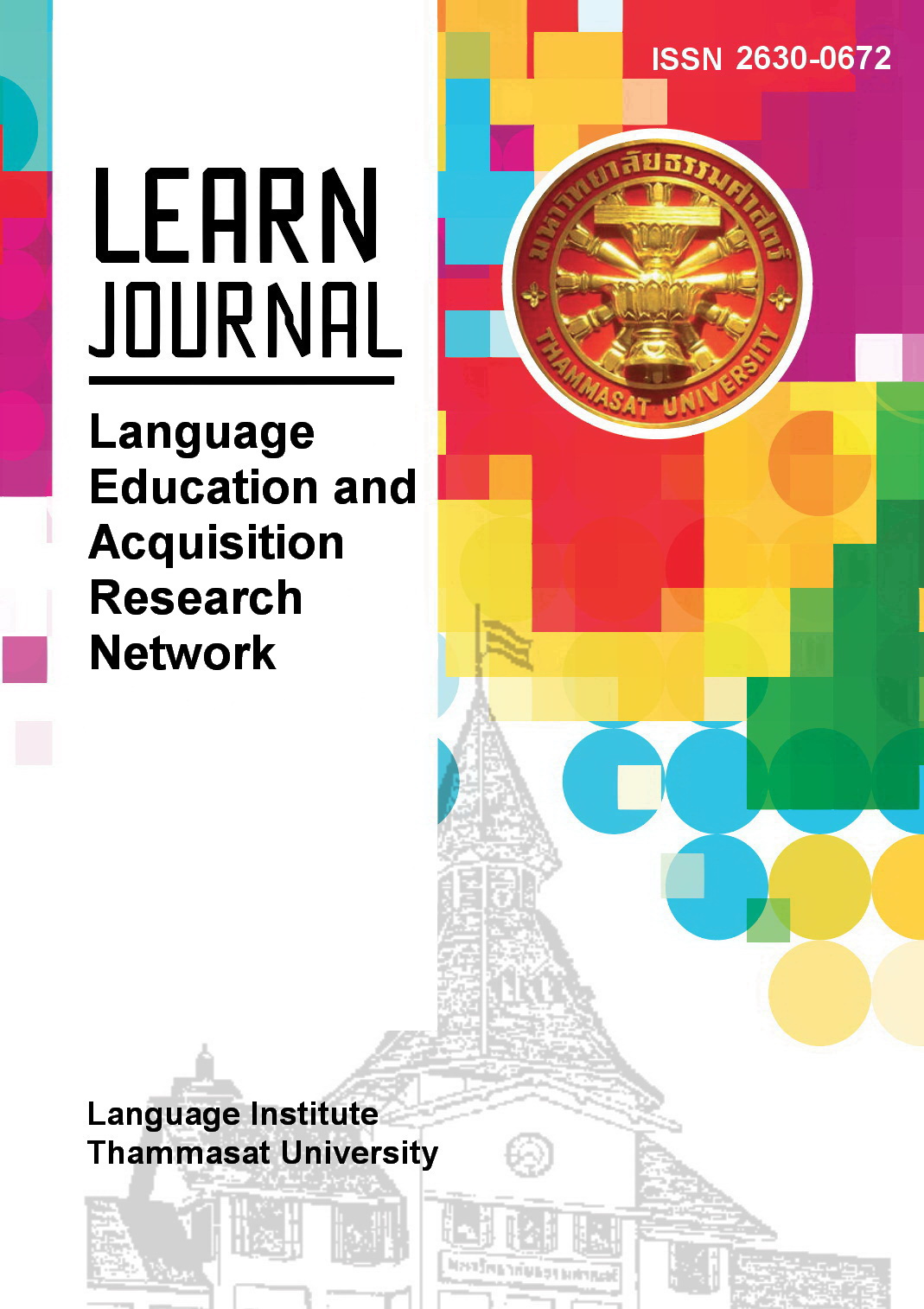Should a Book Be Judged by its Back Cover? Some Written/Formal Features as Observed in Happily-Ever-After Women’s Novel Blurbs
Main Article Content
Abstract
This study examined written/formal register based on happily-ever-after women’s fiction conventional blurbs. In particular, the 80 blurbs were equally divided into two types: the classic and mass-marketed. Biber et al. (2021) was used as the framework to extract features to respond to the two research questions: What were the top written/formal features among the classic and mass-marketed happily-ever-after women’s novel blurbs? And, which blurb type displayed more resemblance to written/formal register? The functional framework comprised three main groups of features: The passives, adjectivals and adverbials. Results revealed that the first two showed a strong tendency towards written/formal register while the last seemed to show the opposite but was taken here to be in-between features, corresponding to fiction language. The top written/formal features based on the two types of blurbs were the passives (both the full and reduced forms) (26%), full relative clauses (23%), full adverbial clauses (20%) and attributives (13%). The blurb type that seemed inclined towards written/formal nature more was the classic, as substantiated by five salient features: the passives, attributives, -en adjectivals, -ing adverbials and -en adverbials. It is believed that discourse analysts and ESL/EFL teachers can pay more attention to these useful syntactic features, particularly the full and reduced forms, as ways to compress information in formal writing.
Article Details
References
Bacić, M. (2021). The syntactic features of promotional language in book blurbs. Nasledje Kragujevac, 18(48), 117-131. https://doi.org/10.46793/naskg2148.117b
Baron, N. S. (2000). Alphabet to email: How written English evolved and where it’s
heading. Routledge.
Biber, D. & Gray, B. (2016). Grammatical complexity in academic English: Linguistic
change in writing. Cambridge University Press.
Biber, D., Johansson, S., Leech, G., Conrad, S., & Finegan, E. (2021). Grammar of spoken and written English. John Benjamins.
Carter, R., & McCarthy M. (2006). Cambridge Grammar of English. Cambridge
University Press.
Carter, R., McCarthy, M, Mark, G., & O’Keeffe, A. (2011). English grammar
today: An A-Z of spoken and written grammar. Cambridge University
Press.
Crystal, D. (2019) Cambridge encyclopedia of the English language (3rd ed.).
Cambridge University Press.
Cuddon, J. A., & Habib, M. A. R. (2013). Dictionary of literary terms and literary
theory (5th ed.). Penguin.
Eagleton, T. (2005). The English novel: An introduction. Blackwell.
Ellis, R. (1997). Second language acquisition. Oxford University Press.
Gea-Valor, M. L. (2005). Advertising books: A linguistic analysis of blurbs,
Ibérica, 10, 41-62.
Grossi, B. & Bruti, S. (2015). Blurbs in fiction: A genre-based, linguistic and semantic
analysis. Unpublished MA thesis, University of Pisa, Italy.
https://www.universalclass.com/articles/writing/the-market-of-
women-fiction.htm
Hyland, K. (2016). Teaching and researching writing (3rd ed.). Routledge.
Jackson, J. (2014). Introducing language and intercultural communication. Routledge.
Johnstone, B. (2018). Discourse Analysis (Third Ed.). Routledge.
Larsen-Freeman, D., & Celce-Murcia, M. (2016). The grammar book (3rd ed.). Heinle & Heinle.
Leech, G. (2006). A glossary of English grammar. Edinburgh University Press.
Leech, G., Deuchar, M., & Hoogenraad, R. (2006). English grammar for today:
A new introduction (2nd ed.). Palgrave Macmillan.
Marčiulionienė, V. (2006). Publisher’s blurb on English books of fiction: A
diachronic genre analysis. Filologija, 11, pp. 61-71.
Matthews, P. H. (2014). Oxford concise dictionary of linguistics (3rd ed.). Oxford
University Press.
McArthur, T., Lam-McArthur, J., & Fontaine, L. (Eds.) (2018). Oxford
companion to the English language (2nd Ed.). Oxford University Press.
Mullany, L, & Stockwell, P. (2015). Introducing English language. A resource
book for students (2nd ed.). Routledge.
Pupipat, A., Rungkaew, T, & Meeparp, L. (2022). Judging a book by its back
cover: Spoken/informal register as found in Happily-Ever-After
Women’s novel blurbs”, JSEL, 17 (2), pp. 1-31
Swan, M. (2016). Practical English usage (4rd ed.). Oxford University Press.
Trousdale, G. (2010). An introduction to English sociolinguistics. Edinburgh
University Press.


